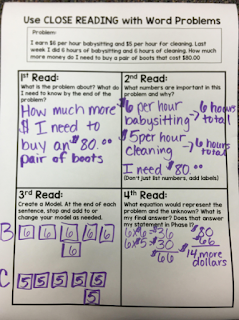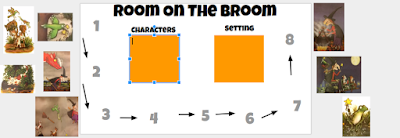3-Act Math Task
Over the past week, I have had the opportunity to go into our first grade classrooms and preform a 3-Act Math Task. The 3-Act Math Task allows for students to engage in math conversation and share their ideas. Most of the lessons begin with a short clip or image that doesn't give away large amounts of information.
In Act 1 teachers ask students: What do you notice?, What do you wonder?, and What is your Estimate?
 In Act 2 teachers ask students: What information do you need to solve the problem? and How are you going to solve the problem?
In Act 2 teachers ask students: What information do you need to solve the problem? and How are you going to solve the problem?
In Act 3 students take the lead and share out how their thinking and how they came up with their answers.
Before starting the lesson I introduced our recording sheet. The first box is where students make an estimate. We talked about what it means to estimate and how we can make a good estimate. The second box requires students to draw a picture to help them solve their problem. The third box asks for a number sentence to show their thinking. The final box asks for their answer.
Our 3 Act Task was titled "Humpty Dumpty" The short clip shows a little girl opening up the fridge and a carton of eggs drops out. The question posed to the students is: How many eggs broke? As we worked through the Acts the students were given more information.
This is not just for first grade but can be used for ALL grade levels. Here is the link to all of Graham Fletcher's 3 Act Task: 3 Act Task Link.
K-2: Recording Sheet
3-5: Recording Sheet
















































